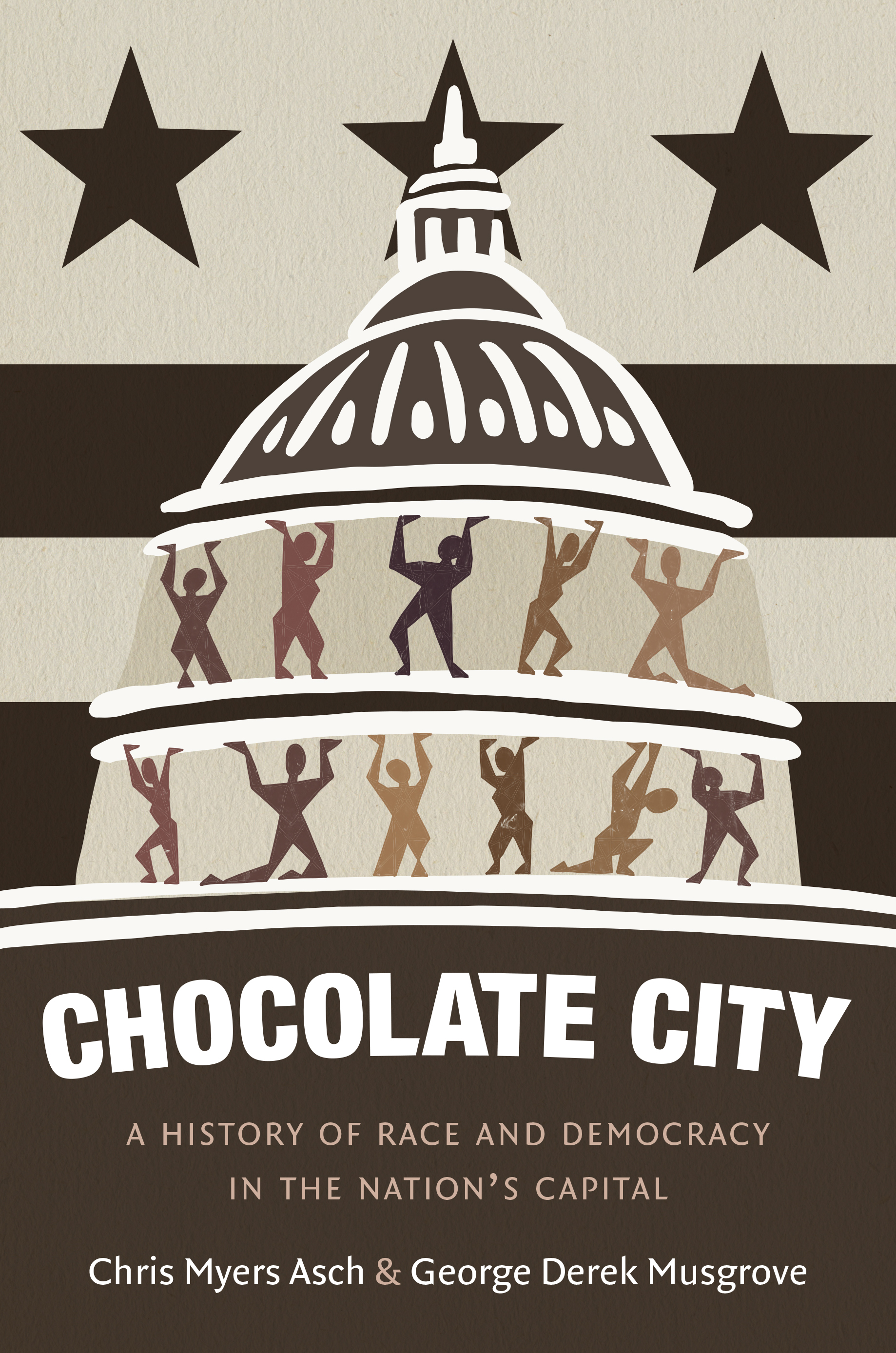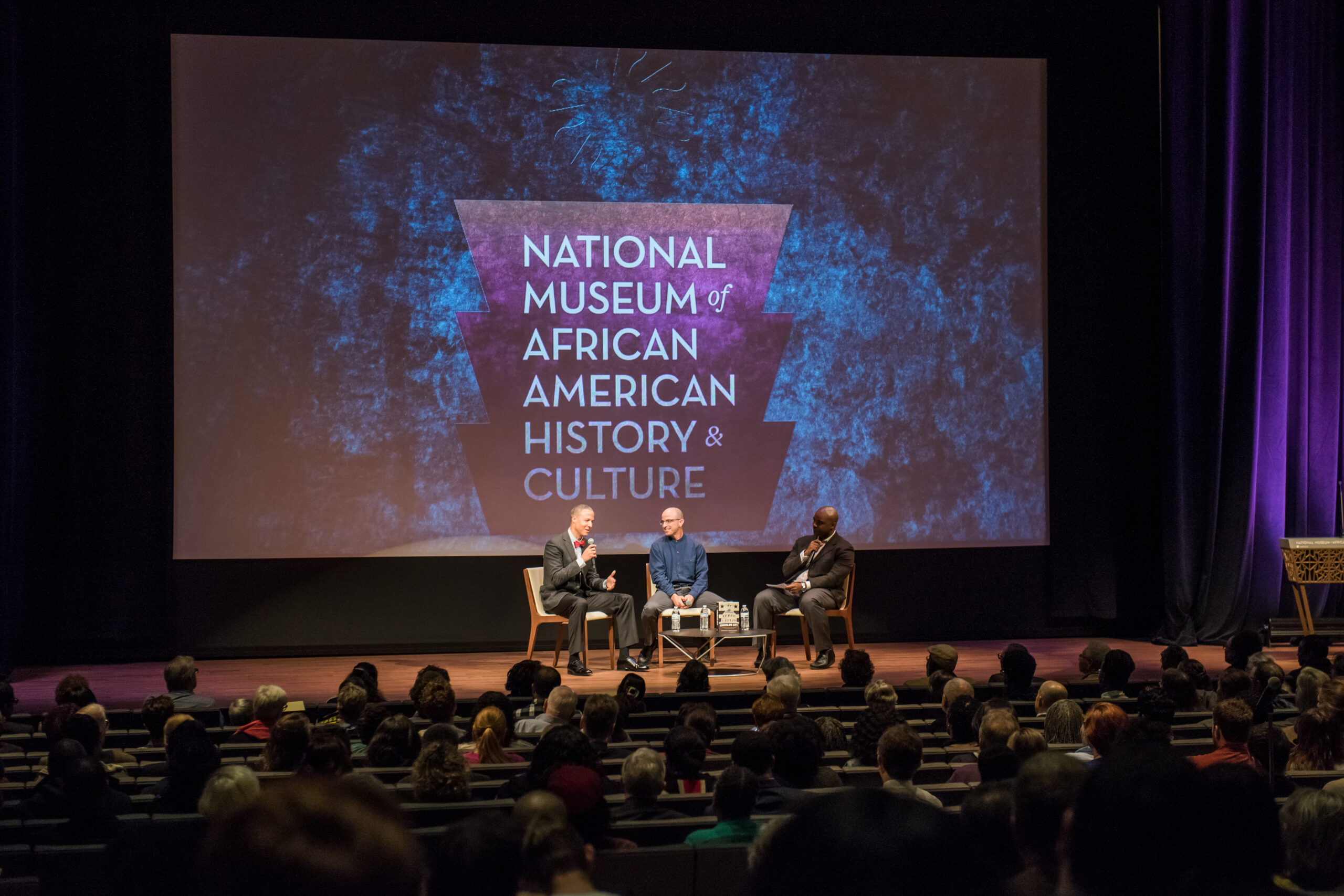George Derek Musgrove ’97, associate professor of history, launched his new book Chocolate City: A History of Race and Democracy in the Nation’s Capital, University of North Carolina Press, with co-author Chris Myers Asch at the National Museum of African American History and Culture on November 2.

While teaching the history of the District of Columbia at the University of the District Columbia (UDC), Musgrove and Asch discovered the need for an accessible and comprehensive text that tells the full history of our nation’s capital.
After six years of research and writing they have produced a sweeping history of race and democracy in D.C. They argue that because of the consistent presence of a large black population, race, above and beyond other factors, has proven to be the most significant explanation for social, economic, and political divisions in the District — and as a bellwether for the country, D.C. shows how race has been the central fault line in American democracy.
“D.C. is a beacon for black America. In the 1830s it was a magnet for free blacks,” explains Musgrove, who has taught at UMBC since 2012. “During the Civil War it was a place to which slaves could escape from Maryland and Virginia and tens of thousands poured into the city. In the late 19th century it had the largest black population of any city in the country, and in 1957 it became the first majority black city in the United States.”
Like its namesake, the 1975 Parliament Funkadelic album Chocolate City, the book centers on the everyday people who make up the D.C. beyond Capitol Hill. It is a narrative focused on a city that is also a national stage.

For Musgrove, D.C. history includes the successful strivers but also the working people. It is the story of its more famous citizens like Mary Church Terrell and Walter Fauntroy, but also of welfare moms who create housing cooperatives, the struggles and triumphs of Irish immigrants in the mid-19th century, and the black elites of the Jazz Age.
In the process of weaving a national and local story, Musgrove and Asch realized two things: first, that D.C. history tells a unique story about American democracy by having the distinction of being the only city that is run by Congress and, second, how race influences this mode of governance.
The city provides us “a window into our democracy and how it is perverted by issues of race. These issues play out in the streets of the city,” explains Musgrove. “Keep it in mind that we are defining race not as black and white, but as Latinos, Ethiopians, as whites, and Native Americans. The latter group was central to understanding race and government for the first hundred years after contact.”
Musgrove and Asch draw on this vast documented history of the city and present the stories for a mass audience in one place with the hope that it will allow professors to engage new students of D.C. history, provide context for activists fighting gentrification, and help members of the neighborhoods continue to actively discuss their city’s history.
“Our hope is that people of goodwill will look at the lessons of D.C. history and use them to guide some of their activism,” says Musgrove.“We think it is a good guide for future action for making a better city, for making something really democratic of the alleged capital of the free world.”
Q&A: Read UMBC Magazine’s interview with Derek Musgrove ’97
For more information…
Chocolate City Facebook page:
Facebook.com/chocolatecitybook
Places to Purchase:
Banner image: George Derek Musgrove, Chris Myers Asch with moderator at the Oprah Winfrey Theatre in the National African American History and Culture Museum. Photo by Marlayna Demond ’11 for UMBC.
Tags: Alumni, CAHSS, diversityandinclusion, History, Innovation, ROI




